Workers who built the first Transcontinental Railroad, by hand, in the late 1860s labored through grueling heat, biting winter cold, snow, attacks from Native American tribes, and long, long work days. Learn how they did it with this excerpt from one of Trains’ newest DVD’s, Journey To Promontory, available from the Kalmbach Hobby Store. […]
Section: History
Tunnels on the first Transcontinental Railroad
Workers who built the first Transcontinental Railroad, by hand, in the late 1860s labored through grueling heat, biting winter cold, snow, attacks from Native American tribes, and long, long work days. Learn how they did it with this excerpt from one of Trains’ newest DVD’s, Journey To Promontory, available from the Kalmbach Hobby Store. EXCERPT TRANSCRIPT: Dave Seidel, […]
A map of the original route of the Transcontinental Railroad as it appears today
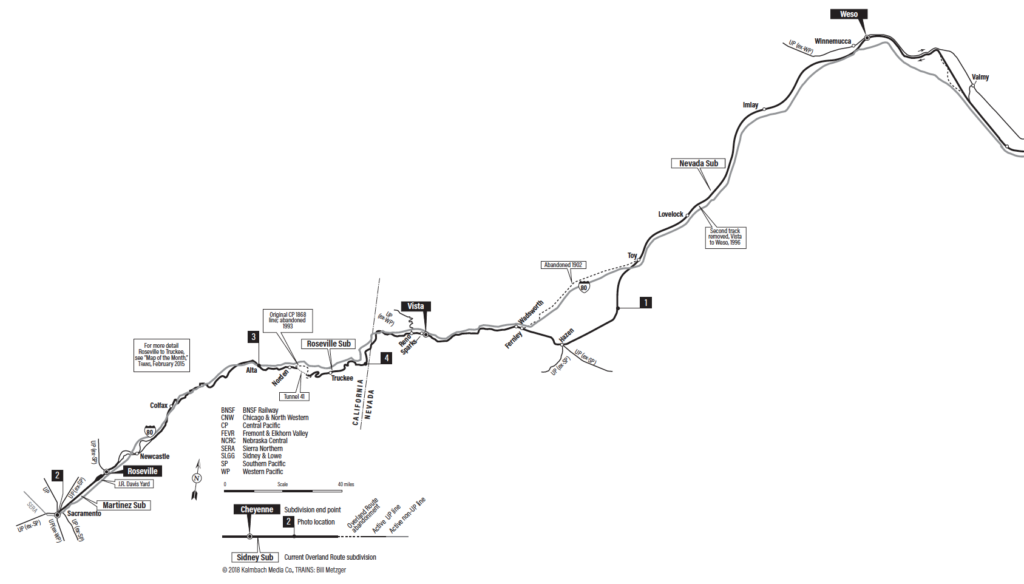
CLICK ON AN IMAGE TO ENLARGE THE MAP California to Nevada Nevada to Utah Utah to Wyoming Wyoming to Nebraska Nebraska to Iowa The first Transcontinental Railroad was a monumental undertaking by the time workers finished it in 1869. Today, tourists and enterprising photographers can visit much of what American ancestors left behind 150 years […]
A map of the Union Pacific’s major challenge in building the Transcontinental Railroad: Sherman Hill
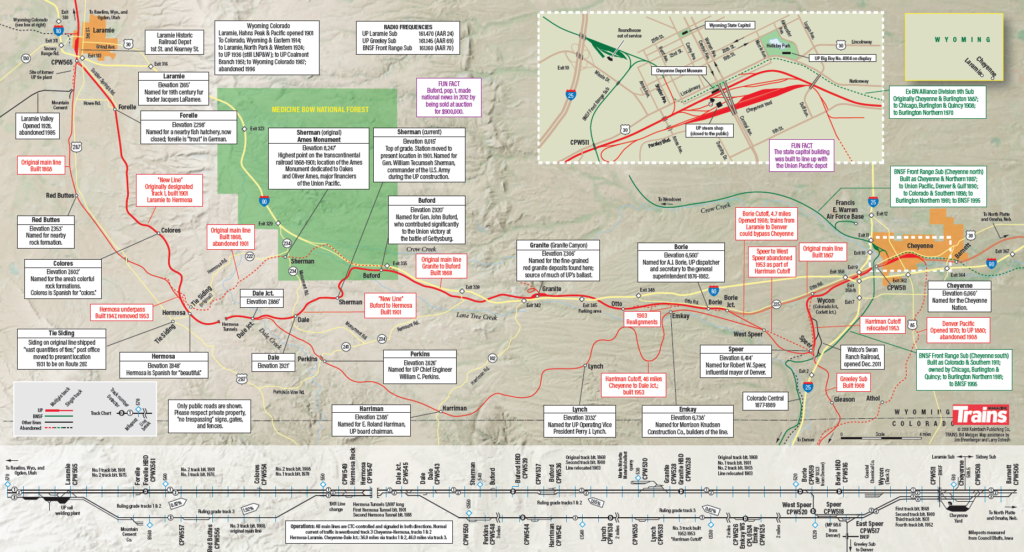
Map of Sherman Hill on Union Pacific: one of the Transcontinental Railroad’s challenging obstacles Sherman Hill is one of the imposing physical challenges from the building of the first Transcontinental Railroad that remains a challenge today. In this map, see what Sherman Hill is like from an operations point-of-view for Union Pacific. Only from Trains! […]
What’s in the Transcontinental Railroad’s most famous photograph?
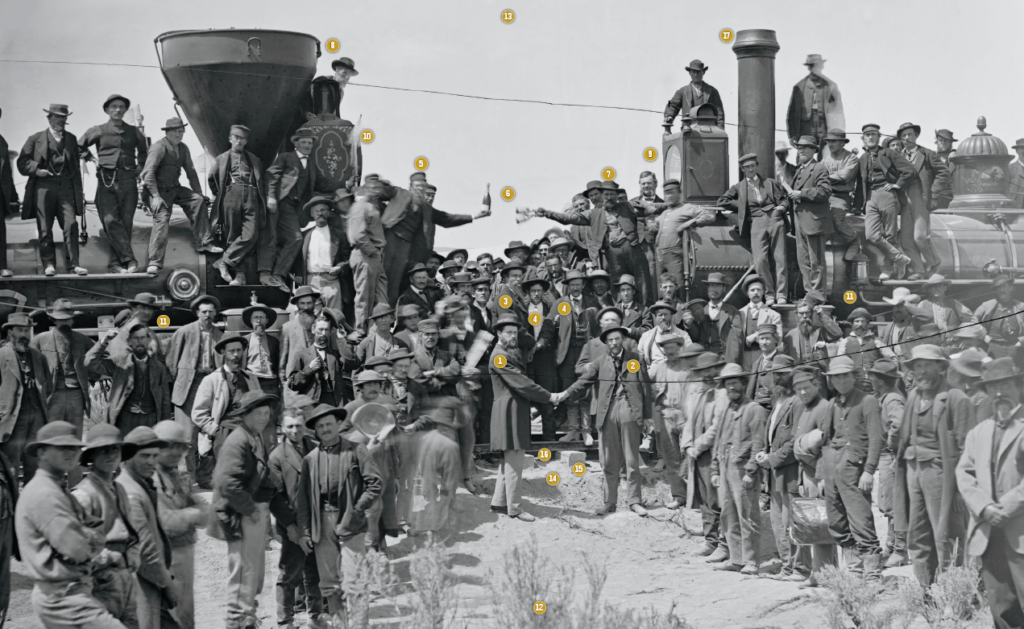
1.) Samuel S. Montague, Central Pacific chief engineer 2.) Grenville M. Dodge, Union Pacific chief engineer 3.) James H. Strobridge, CP construction superintendent 4.) Unknown UP officials 5.) CP Jupiter engineer George Booth 6.) Beverages, possibly champagne 7.) UP No. 119 engineer Sam Bradford 8.) Funnel or “Yankee” stack for a wood burning locomotive 9.) Coal oil or […]
A map of the Union Pacific today — that includes the original route of the Transcontinental Railroad
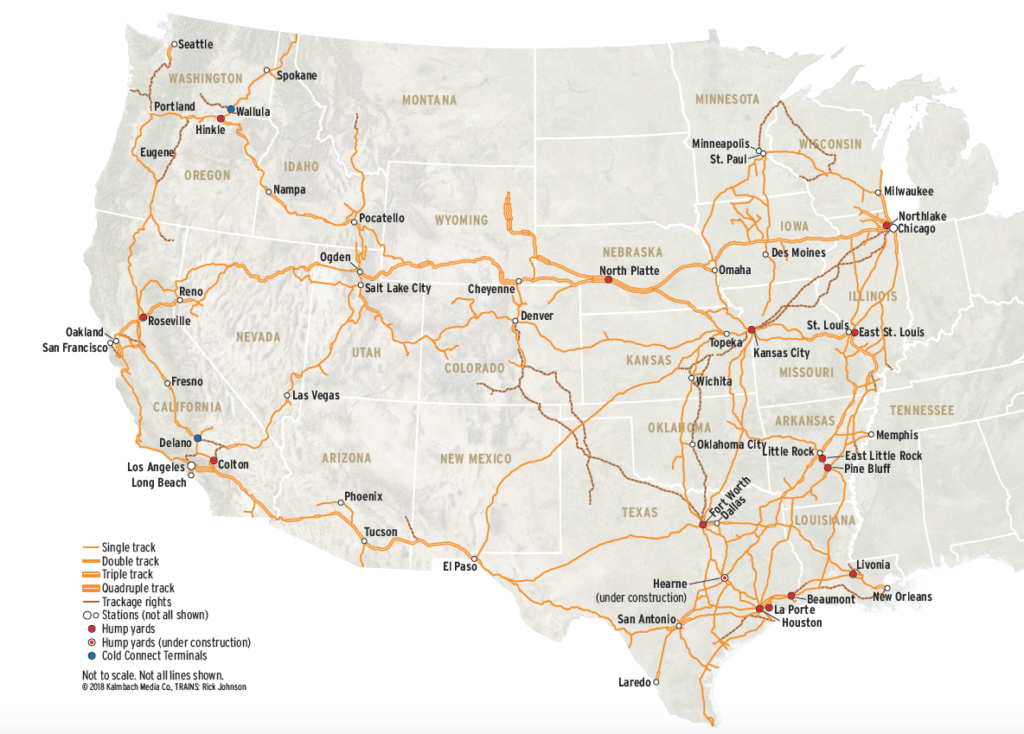
Union Pacific Railroad as of 2019 The original Transcontinental Railroad route was the combined efforts of two railroads: the Central Pacific and the Union Pacific. By 2019, 150 years after joining their rails at Promontory Summit, Utah, only the Union Pacific remains. Union Pacific operates along much of the original Transcontinental Railroad route between Sacramento, […]
Finding the Transcontinental Railroad’s special tree that marked 1,000 miles from Omaha
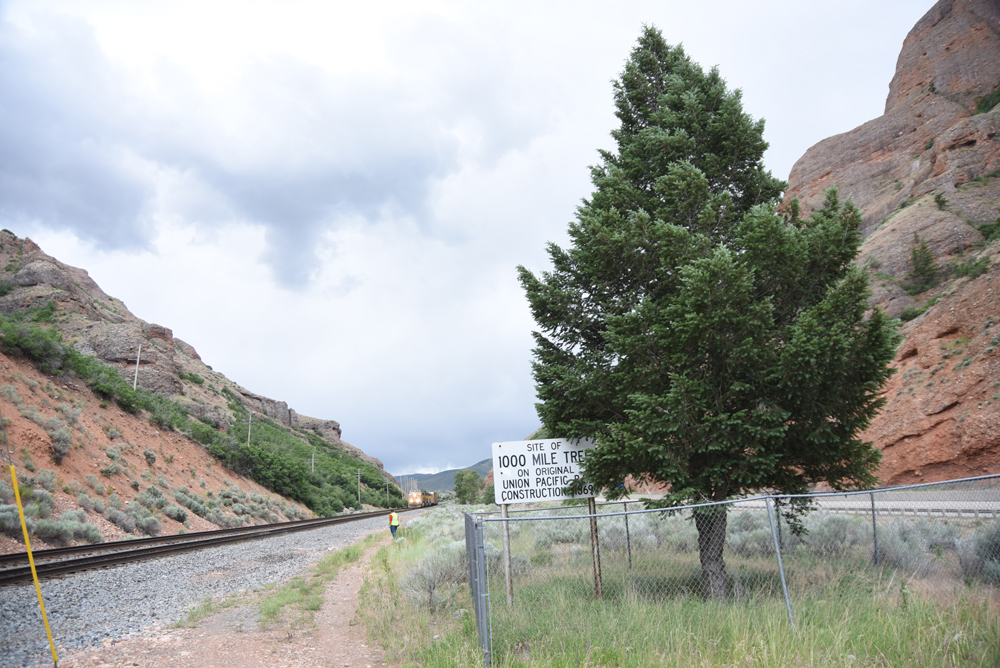
The Transcontinental Railroad’s replacement 1,000-mile tree in Utah. Jim Wrinn Of all of the locations that Union Pacific marked either formally or informally in the 1860s as it worked westward toward Promontory, one of the most interesting is the 1,000-mile tree. Nestled next to the tracks in Weber Canyon between Evanston, Wyo., and Ogden, Utah, […]
Piedmont Road: the place on the Transcontinental Railroad where Thomas Durant was delayed traveling to Promontory
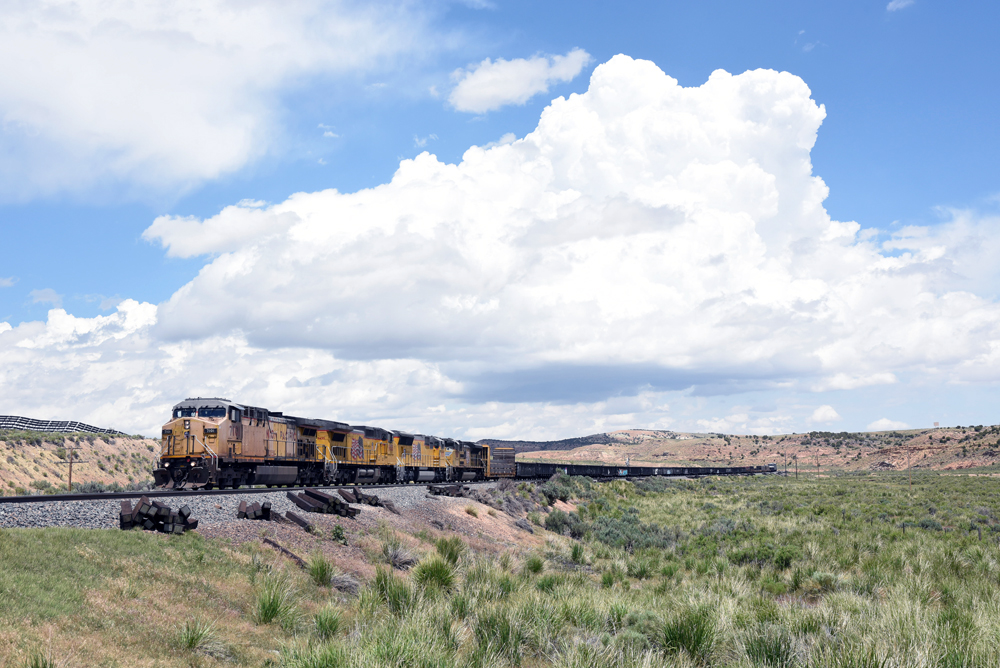
A view of the Union Pacific main line from Piedmont Road near the Altamont and Alpine tunnels along the Transcontinental Railroad route. The location is where, legend has it, that Union Pacific workers delayed Thomas Durant’s train on his way to the Golden Spike ceremony at Promontory Summit, Utah. Jim Wrinn A tried and true […]
Rediscovering the Ames Brothers monument on the Transcontinental Railroad’s Sherman Hill
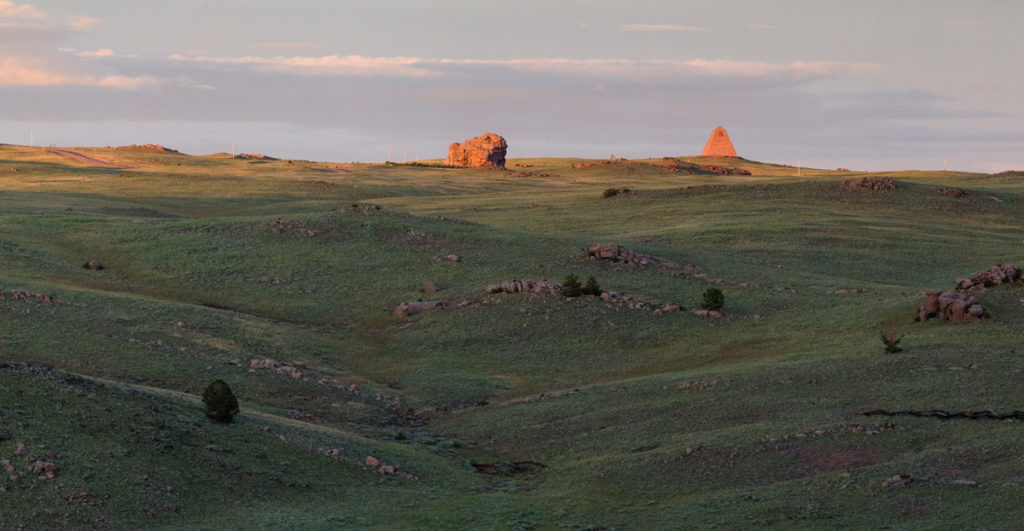
The Ames Brothers monument along the former Union Pacific and Transcontinental Railroad right-of-way in Wyoming. The monument is on the Sherman Hill grade. Richard Koenig OLD SHERMAN, Wyo. — One of my favorite places on the first Transcontinental Railroad is Sherman Hill. It was the first big obstacle in Union Pacific’s way when the railroad […]
What’s in a photograph?: Mountain-type F3s on the Union Pacific

Jerry A. Pinkepank 1 “Mountain Type” F3A. Briefly in 1947, EMD referred to its steam-generator-equipped, passenger-geared F3s as “The Mountain Type.” These units were intended for use on passenger trains that traversed grades for which E7s were not suitable. In September 1947 Union Pacific got eight F3 A-B-B sets, plus three extra A units, all […]
Taking a fresh look at the transcontinental railroad in photos

FULL SCREEN Drake Hokanson FULL SCREEN Drake Hokanson FULL SCREEN Drake Hokanson FULL SCREEN Drake Hokanson FULL SCREEN Drake Hokanson FULL SCREEN Drake Hokanson FULL SCREEN The railroad roundhouse is even more an anachronism than the heavy-timber barn, and perhaps even more emblematic of nostalgic times in U.S. history. The Evanston, Wyo., roundhouse stabled Union […]
Where the Transcontinental Railroad’s replica steam locomotives live
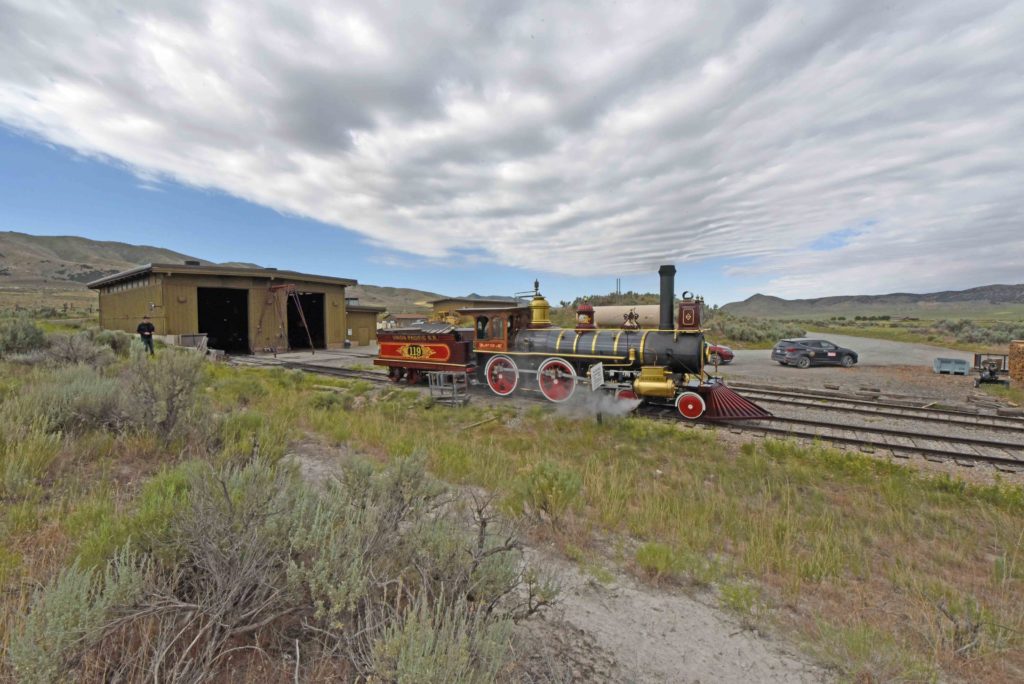
Replica steam locomotive Union Pacific 4-4-0 No. 119 stands outside its modern engine shed in rural Utah in 2018. TRAINS: Jim Wrinn Come May 10, 2019, two locomotives will be in the spotlight for some 12,000 spectators at the 150th celebration of the first Transcontinental Railroad completion: Replicas of Central Pacific Jupiter and Union Pacific […]
